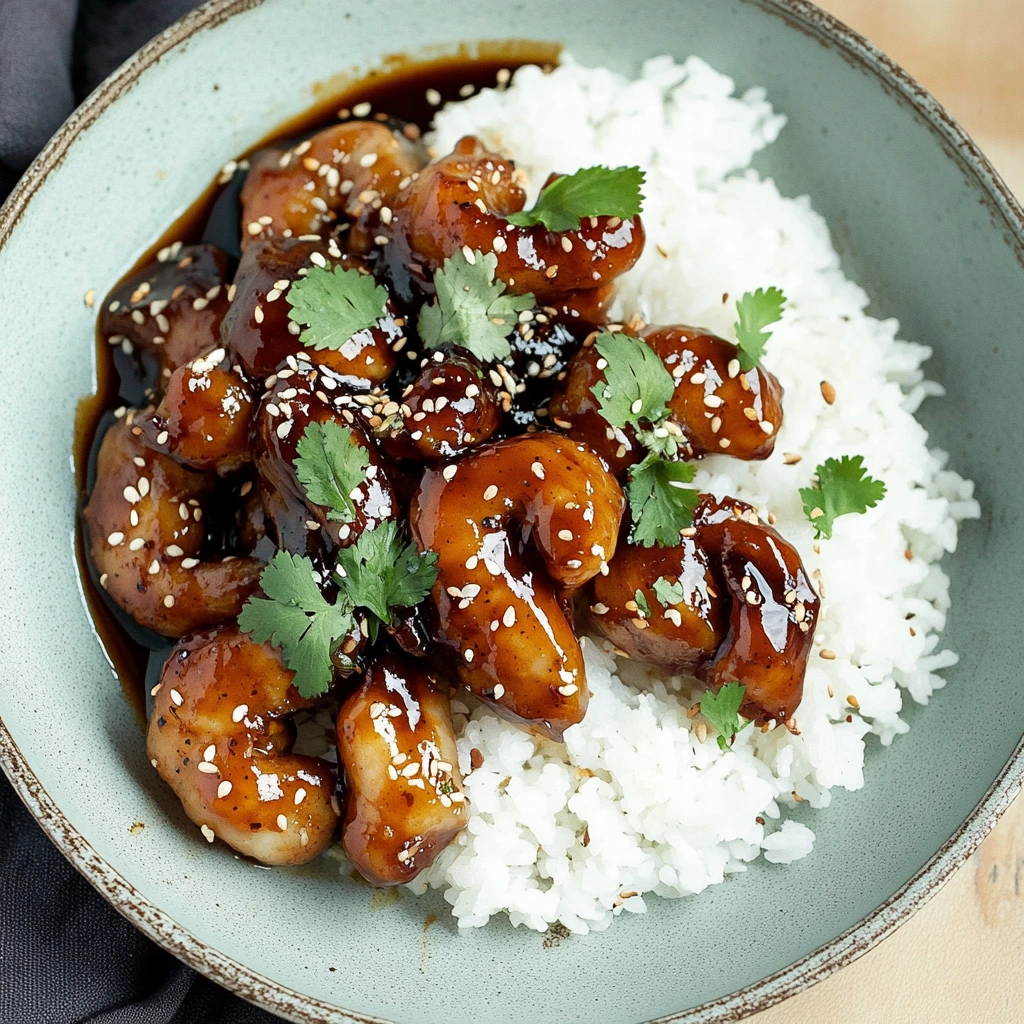 Pin it
Pin it
Teriyaki shrimp transforms ordinary seafood into a memorable meal. The sweet-salty glazed sauce perfectly coats these tender morsels, capturing the beautiful balance that's so typical of Asian cooking.
I first tried this during a trip to Japan and it's now a staple in my kitchen. Even my picky kids who usually avoid seafood always ask for seconds.
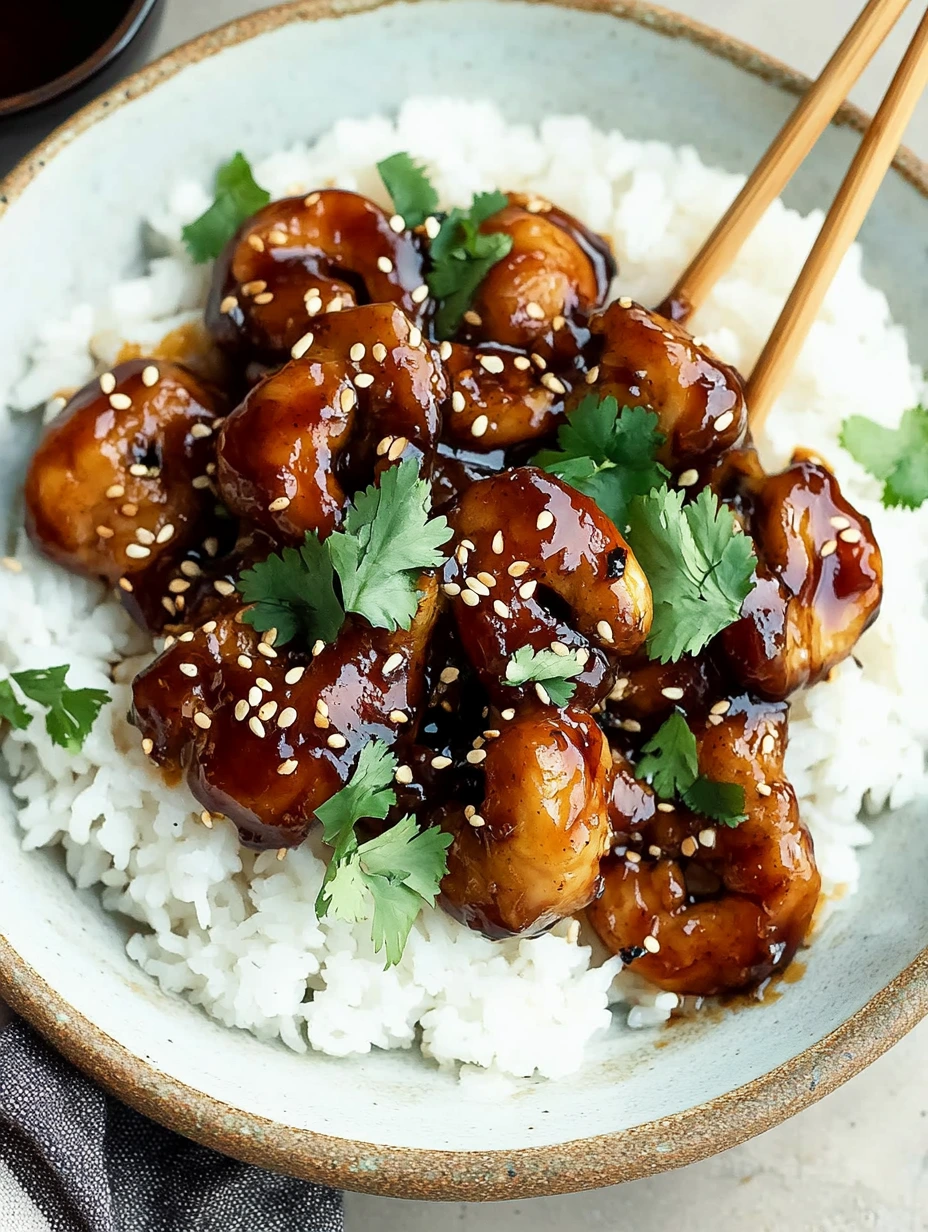 Pin it
Pin it
Fascinating Ingredient Breakdown
- Peeled raw shrimp: go for medium or large ones with firm, clear flesh for best cooking results
- Soy sauce: pick naturally brewed varieties for richer, more complex flavor
- Mirin: this sweet rice wine adds shine and balances the sauce beautifully
- Fresh ginger: finely grated for subtle background warmth
- Brown sugar: creates that signature glossy caramelization in the sauce
Kitchen Wizardry
- Shrimp Prep:
- Rinse shrimp thoroughly in cold water then pat them completely dry with paper towels
- Sauce Making:
- Stir all sauce components in a bowl until the brown sugar completely dissolves
- Flavor Melding:
- Let shrimp soak in the mixture for at least half an hour in the fridge
- Cooking Just Right:
- Get your pan nice and hot before adding the sesame oil
- Tasty Finish:
- Arrange shrimp in a single layer to make sure they cook evenly
My family particularly enjoys a slightly spicy version. I often toss in a pinch of cayenne pepper which really brings out the flavors without taking over.
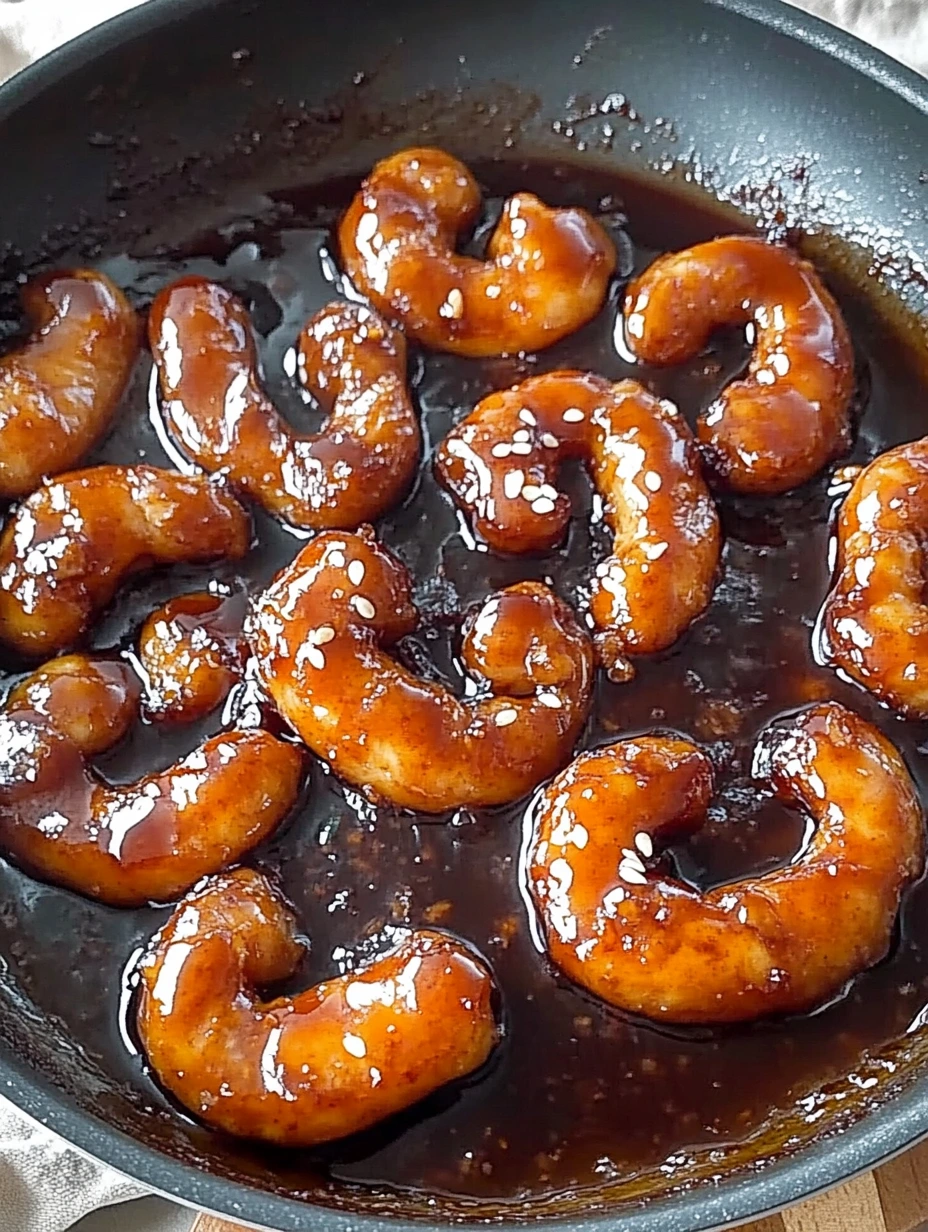 Pin it
Pin it
Incredible Table Pairings
Dish up these teriyaki shrimp over fluffy jasmine rice topped with toasted sesame seeds. They go wonderfully with:
- Freshly cooked aromatic rice
- Crisp stir-fried veggies like broccoli or bell peppers
- Wakame seaweed salad for an authentic touch
- Lightly salted edamame on the side
Customize Your Meal
This basic approach can be tweaked however you like. Here are some proven variations from my kitchen:
- Toss in shiitake mushrooms for extra umami depth
- Mix crunchy vegetables directly into the sauce
- Turn it into a bowl meal with avocados and cucumbers
- Make it hot with sriracha or sambal oelek
Smart Storage Tips
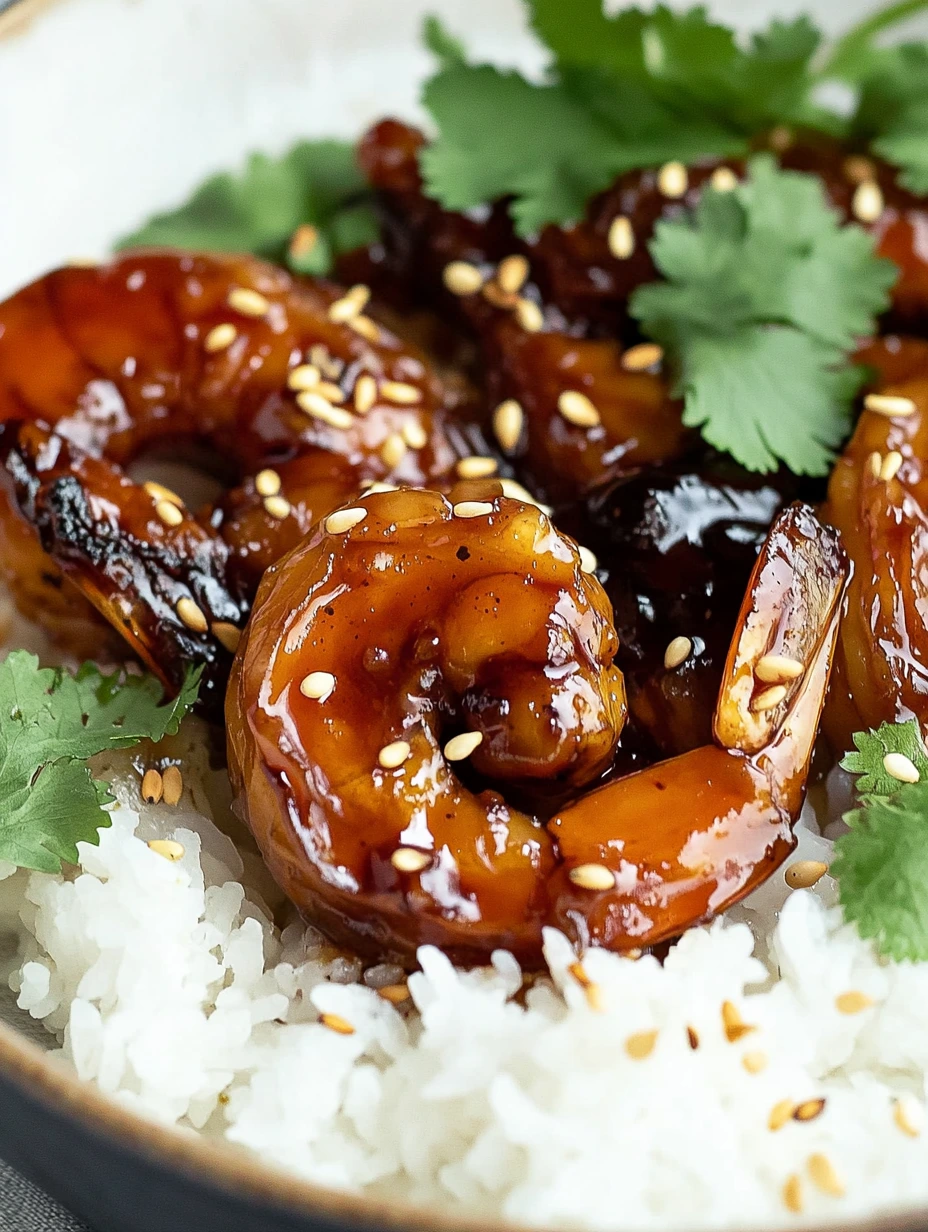 Pin it
Pin it
To keep all the flavor intact:
- Store leftovers in an airtight container in the fridge for up to 2 days
- Warm up gently in a pan instead of microwaving
- Keep rice and shrimp separate when storing for better reheating
- Add a few drops of water when reheating to freshen up the sauce
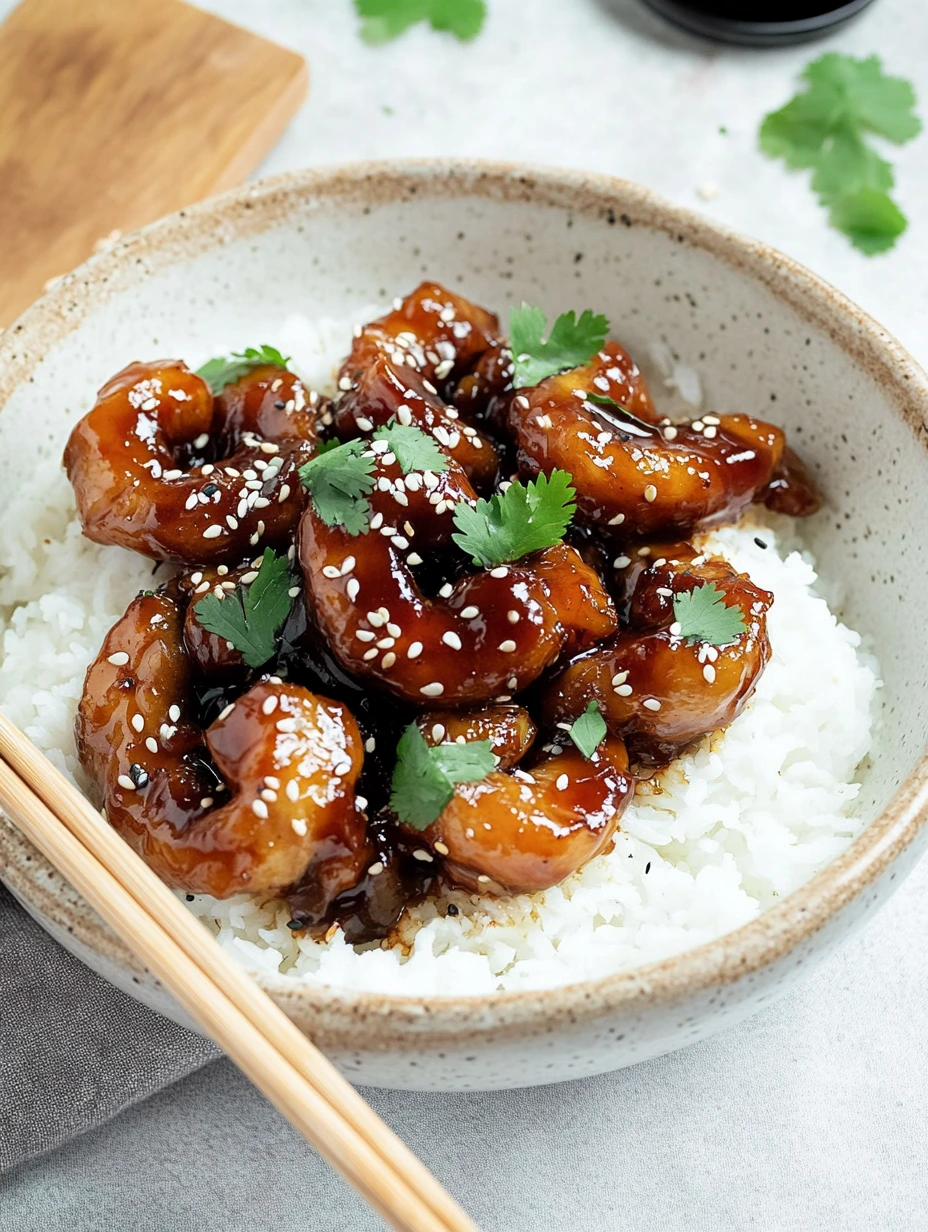 Pin it
Pin it
This teriyaki shrimp has become a cornerstone in my cooking. It perfectly shows the balance between simplicity and elegance that makes Japanese food so special. Every time I make it, I'm reminded that respecting ingredients while adapting traditional dishes to your own taste is what cooking's all about. It proves that truly good food doesn't need to be complicated to be unforgettable.
Frequently Asked Questions
- → Can you use frozen shrimp?
- Absolutely! Just let them thaw in the fridge overnight and pat them dry before cooking.
- → How long should you marinate the shrimp?
- Anywhere from 30 minutes to 2 hours tops. Too long and they might get rubbery.
- → What’s a good substitute for mirin?
- A mix of dry white wine and a little sugar works great as a mirin alternative.
- → How do you know when the shrimp are done?
- They're cooked when they turn pink and look slightly opaque, usually in about 2 to 3 minutes.
- → What goes well as a side?
- White rice is classic, but stir-fried noodles or steamed veggies are great options too.
